Magnesium sulfate is commonly referred to as Epsom salt. Still, in the realm of gardening it has attracted attention due to some outstanding benefits that it offers towards plant health and growth. This naturally occurring mineral compound helps to provide essential nutrients lacking in the soil, especially magnesium which is very significant in photosynthesis and overall nutrient uptake. This article will extensively look at how Epsom salts can improve plant vigor, flowering, and fruiting. Moreover, we shall touch on how it can be applied best and highlight some plants more likely to benefit from this simple but effective gardening amendment. This study aims to assist novice and experienced gardeners with the information they need for better gardening using Epsom salt.
Understanding the Nutritional Benefits of Epsom Salt
The nutritional advantages of Epsom salt mainly lie in its two major constituents: magnesium and sulphur. Magnesium is important for chlorophyll production, which permits photosynthesis to work effectively in plants by helping with energy transfer and photosynthesis. It helps trigger various enzymes that catalyze biochemical reactions necessary for plant development. Additionally, sulfur aids amino acid as well as protein synthesis essential for the formation of chlorophyll and other metabolic activities (Hauschild et al. 1991). Similarly, sulfur increases resistance to disease and contributes to the production of essential oils and enzymes. In combination, these nutrients not only enhance plant health but also promote the blooming and fruiting processes hence making Epsom salt a priceless resource in sustainable gardening practices.
How magnesium supports plant growth
Magnesium plays a vital role in various physiological processes contributing to plant growth. It is an essential part of chlorophyll; the pigment responsible for photosynthesis that is green colored (Pilon-Smits et al., 1999). Photosynthesis takes place within the chloroplasts where carbohydrates are produced from carbon dioxide under sunlight absorption. This implies that optimal levels of magnesium improve photosynthetic efficiency although this varies depending on species but a concentration range of 0.15% – 0.40% in leaf tissue is ideal for maximum chlorophyll production.
Also, magnesium serves as a cofactor for more than 300 enzyme-controlled reactions occurring within plants, such as protein and nucleic acid synthesis (Zhu et al., 2008). These enzymes are crucial during flowering and fruiting stages since they regulate various metabolic pathways controlling growth and development. The recommended magnesium concentration would be around 50-75 mg/kg at soil level, depending on the specific species being grown.
Besides aiding phosphorus or nitrogen transport internally within plants, magnesium also facilitates efficient nutrient uptake by them whereby it functions as an efficient transporter through membranes found inside organisms. This indicates that by ensuring plants have sufficient magnesium levels, one can avoid nutrient deficiencies leading to stunted or reduced crop yields thereby emphasizing the importance of Epsom salt as a simple solution for magnesium enrichment in soil.
The role of sulfur in enhancing plant health
Sulfur plays a crucial role in improving plant health through synthesis of important amino acids, proteins and some vitamins. It is necessary to produce chlorophyll which enhances photosynthesis efficiency. Sulfur is also an integral component of coenzymes found in many metabolic pathways that support plant growth and development (Hauschild et al., 1991). The presence of sulfur in the soil results in improved availability of essential nutrients to plants and increased resistance against diseases and pests (Pilon-Smits et al., 1999). In addition, sulfur compounds play a major role in developing secondary metabolites that act as natural defenses against environmental stressors. Thus, it is vital for maintaining optimal functions within the plant system for adequate sulfur content so as to achieve high yielding crops.
Can Epsom salt make nutrient absorption better?
The answer is yes. This is because the chemical name of Epsom salt is magnesium sulfate, and it enhances the absorption of nutrients in plants. The production of chlorophyll, which is necessary for photosynthesis and, therefore, a source of energy for a plant, relies on its magnesium part. Moreover, it plays an important role in activating enzymes that are necessary for the assimilation of other vital elements, such as nitrogen and phosphorus, among others. Further still, proteins are synthesized with the help of the sulfate component found in Epsom salts, thereby aiding overall metabolism in plants. Magnesium deficiencies caused by appropriate usage of Epsom salt therefore ensure higher nutrient uptake improving plant health altogether
Enhancing Photosynthesis with Epsom Salt
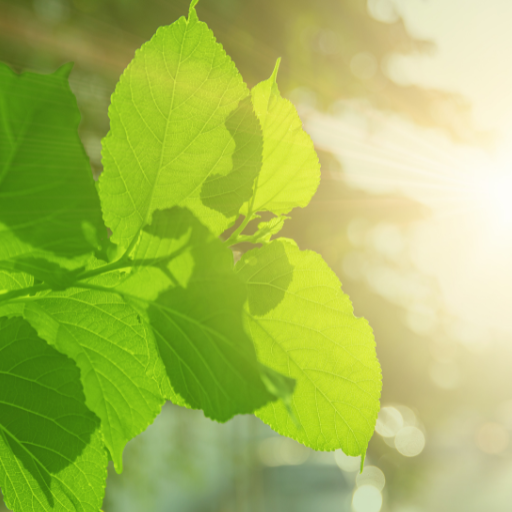
The magnesium in Epsom salt has been observed to enhance photosynthesis in plants mainly through its magnesium content. Magnesium is an important part of chlorophyll, the pigment that absorbs light energy during photosynthesis. Through increasing chlorophyll production, Epsom salt increases light absorption and, therefore, enhances the efficiency of energy conversion. Also, magnesium helps activate many enzymes involved in metabolic processes essential for the photosynthetic cycle. This ensures that light is effectively captured and utilized for the growth of the plants, which consequently leads to improved health and development when Epsom salts are regularly used.Regular application of Epsom salt can help optimize light absorption and energy utilization, improving plant health and growth.Epsom salt’s sulfate on top of that could additionally encourage nutrient uptake thereby receiving all necessary elements required for photosynthesis.
How magnesium in Epsom salt boosts chlorophyll production
There are several ways by which magnesium in epsom salts promotes chlorophyll production. Chlorophyll is manganese-dependent as its central atom within a molecule structure. In this way, plant mitochondria generate ATP via proton pumping across their inner mitochondrial membranes using energy derived from electrolysis of water to provide hydrogen ions needed by ATP synthase to convert ADP into ATP.Magnesium functions as a structural component that contributes to plants’ ability to capture sunlight for photosynthesis.Therefore, it can be said that the correct balance between biomass accumulation and respiration should be achieved so as to ensure maximum grain yield while maintaining good quality grain under harmful weather conditions such as high temperatures or drought.
Technical parameters supporting this include:
- Magnesium Concentration: For effective chlorophyll synthesis, enough quantities (0.2-0.5%) of magnesium are needed within the tissues belonging to a particular plant.Too low concentrations may lead to incomplete synthesis, known as chlorosis, hence yellow leaves due to a lack of pigments.
- Soil pH Levels: Soil pH affects magnesium efficiency in chlorophyll synthesis, and the optimum range typically falls at around 6-7.5.The availability of magnesium decreases out of this range, thus impeding the formation of chlorophyll in plants.
- Photosynthetic Rate: Magnesium is also reported to increase photosynthetic rate which is commonly measured as the rate of CO2 assimilation. Magnesium-sufficient plants have been found to be approximately 10–20% more efficient in their photosynthesis compared with magnesium-deficient ones.
These factors combined show how Epsom salt being rich in plant nutrients such as Mg can greatly enhance chlorophyll production leading to overall good health and productivity of these organisms.
The connection between sulfur and energy metabolism in plants
Sulfur plays a pivotal role in energy metabolism by serving as a constituent part of amino acids, vitamins and coenzymes that are involved in a variety of metabolic pathways vital for any organism’s existence. Among other things, it is one part that comprises proteins that are used for synthesizing chlorophyll, thereby affecting the overall photosynthetic efficiency.Sulfur compounds also take part in ATP production, mainly through thiol group formation within metabolic enzymes. Besides, sulphur helps synthesize glucosinolates and other secondary metabolites that are involved in defensive mechanisms and stress responses to strengthen a plant’s ability to adapt to changing environmental conditions while ensuring maximum energy utilization for growth.Sulfur also aids the synthesis of glucosinolates as well as other secondary metabolites necessary for enhancing defense mechanisms against biotic stresses; therefore promoting resistance against both abiotic and biotic stresses under varying climatic conditions that influence grain yield. Response differences related mainly go towards drought tolerance which is associated with sorghum due its ability to close stomata during stress periods than maize or wheat.
Does increased photosynthesis cause healthier plants?
Indeed, improved photosynthesis can make the plants healthier. It boosts their overall development, strength and adaptability. Plants produce more glucose and energy due to increased rates of photosynthesis, which is vital for cell respiration and the synthesis of necessary biomolecules. In many instances in life, it has been found that healthy plants become more resistant to diseases as evidenced by their sturdy growth that enhances their resistance against disease causing agents. In addition, effective nutrient uptake occurs when there is enough photosynthesis where crucial macro- and micro-nutrients are available for various biochemical processes important for plant health. This strong relationship between enhanced photosynthesis and improved wellness can be supported by numerous studies which demonstrated that improving the efficiency of this process may yield hardier, more resilient plants.
Strengthening Plant Structure and Vitality
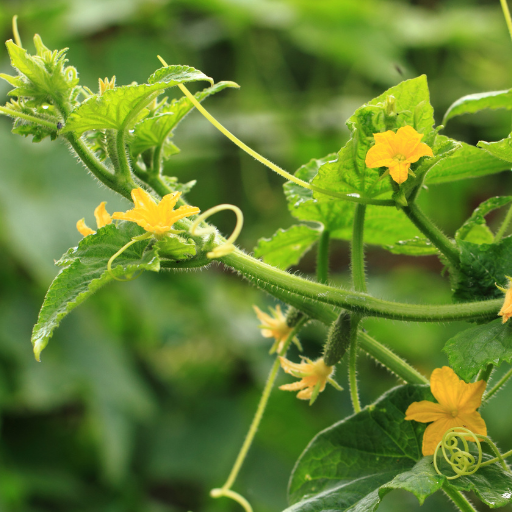
Strengthening plant structure and vitality depends on a multidimensional approach, predominantly concentrating on optimizing light exposure, promoting nutrient availability, and having good watering practices. The soil aeration and use of organic matter for improving soil texture and nutrient retention can result to the plants benefiting from structural support generated by healthy root systems, according to reliable sources. The role played by the increased uptake of nutrients, especially macronutrients like nitrogen, phosphorus, and potassium, is important in the development of strong stems and vigorous foliage. Also, mulching practices, as well as companion planting, have been associated with improved resilience of plants due to effects such as enhanced microbial activities that enhance availability of resources in this case, including beneficial nutrients. As such, when merged together, they foster a growth environment for better biology, making them be the best tactics for promoting plant health.
How does Epsom salt contribute to stronger stems and roots?
Primarily, Epsom salt’s (magnesium sulfate) role in strengthening stems and roots lies in its possession of magnesium, which is vital for photosynthesis and chlorophyll synthesis, among other things. This phenomenon increases chlorophyll production, which eases the capacity of plants to trap solar energy while it also boosts general robustness, thus hastening all-around growth. Furthermore, magnesium plays an essential part in activating diverse enzymes supporting nutrient absorption into cells as well as metabolic functioning within cells themselves. It has been found out through research that incorporating Epsom salt in soils improves root formation hence leading to increased stability in plants having stronger root systems. Further still, Epsom salt supports uptake of other substances such as phosphorus thereby promoting root proliferation coupled with tough stem development. All these factor into a rightful conclusion about how the whole plant looks like.
The impact of magnesium on cell development
Magnesium significantly affects cell development by interceding several physiological processes within plant cells. It serves as one of the crucial components needed for the efficient trapping of light that eventually leads to photosynthesis. It is also needed for the structural stability of ribosomes and cell membranes hence enhancing protein synthesis and cell metabolism. It has been found out through research that magnesium deficiency can lead to poor chlorophyll production, stunted growth as well as disrupted cellular functions which are responsible for overall plant health. Furthermore, it helps in regulating nitrogen, potassium and other essential nutrients that are vital for making amino acids used in building blocks for new cells. Therefore, appropriate magnesium insurance will allow optimal cell development as well as general plant health.
Can Epsom salt help plants resist environmental stress?
Epsom salt is another name given to magnesium sulfate and this compound can be used by plants to fight against drought, heat or cold waves during winter periods among others. This enables more magnesium uptake, hence improving not only the photosynthetic rate of the leaves but also their overall healthiness. Magnesium levels have been shown to play a role in the water retention abilities of plants during droughts, thus preventing wilting due to water loss. Using Epsom salts on the garden helps in producing oils as well as secondary metabolites that improve a plant’s defense mechanism against pests and diseases attacking them even when they look healthy. The application of Epsom salt could therefore mean better nutrient uptake resulting in increased resistance of abiotic stresses like heat stress among others on the part of a few subjects among abiotic stresses from all biological worldviews; this means that applying it properly can make a significant difference within its effectiveness whenever there is need for such situations where its usage would be enough source of information throughout your scientific discipline including through writing about good literature reviews which have wouldn’t be so difficult at first glance because they’ll just show us what kind things those people wrote clearly without any further justification otherwise it makes sense if everything happens according to our expectations always since this involves use one word but sensitivity does matter sometimes too particularly where we believe someone would prefer their own meaning used again out of context just like when people come together after long time apart.
Addressing Common Nutrient Deficiencies with Epsom Salt
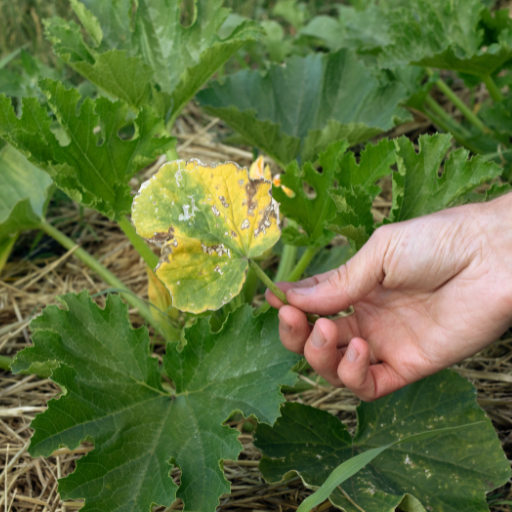
In the plant world, Epsom salt is a useful tool to mitigate a magnesium deficiency in plants and other common nutrient deficiencies. For chlorophyll production, there’s a need for magnesium, yellow leaves, and reduced photosynthetic efficiency, which are indications that it is not enough. The availability of magnesium can be made better if Epsom salt is applied, which can alleviate this problem quickly. Relevant research from leading agricultural websites indicate that when dissolved in water and used either as foliar spray or soil amendment solution Epsom salt enhances the availability of magnesium, promotes healthier growth; and makes plant healthier against environmental stresses. Moreover, magnesium deficiency symptoms can be relieved by proper use of Epsom salts because they function together with calcium which helps in cellular activities. Regular use does not only treat evident deficiencies but also provides overall balance of nutrients within the soil thus favoring healthy conditions for plant development.
Spotting Magnesium Deficiency Signs in Plants
When looking for indications of lack of sufficient quantities of magnesium in plants, I closely examine their leaves for some important signs. Firstly, I look for chlorosis between veins (interveinal chlorosis) where leaf areas become yellow while the veins remain green. This symptom mostly occurs on lower older leaves since Mg moves within the plant quite freely. Other times, leaf curling or necrosis at the margin may occur, especially if things are worse. In some cases, reddish purple spots may form on leaves, indicating stress due to lack of Mg, among other reasons. By recording these signs and relating them to how I have been taking care of my plants I will be able to act on time so as to correct the situation thus promoting healthy growth and survival.
Effect on Plant Health Due To Sulfur Deficiency
The healthiness of a plant may be affected if it lacks enough sulfur which is essential in various physiological processes within its body system. This element is responsible for synthesis of amino acid and proteins leading to dwarfism in plants when it is not adequate. Typically, younger leaves show chlorosis starting from the tips moving inwards, which can eventually cause general yellowing of foliage. Moreover, sulfur deficiency may have an effect in chlorophyll production that leads to low level of photosynthesis by plants. Moreover, flowering or fruiting could be retarded resulting in poor quality and quantity of produce. Maintaining soil fertility through sulfur incorporation into soils through amendments or fertilizers can, however, lead to vigorous growth, ensuring high yields.
Are there other nutrient deficiencies that Epsom salt prevents?
Epsom salt (magnesium sulfate) can be useful for preventing certain nutrient deficiencies such as magnesium and sulfur deficiencies. It is rich in magnesium, essential for the good growth of plants through the synthesis of chlorophyll necessary during photosynthesis. Thus, the use of Epsom salt can rectify situations when there is a lack of enough magnesium, resulting in symptoms like leaf yellowing and stunted growth. Furthermore, the sulphur compound helps in synthesizing crucial amino acids and proteins thus promoting healthy plant development. However, using Epsom salt alone does not replace balanced fertilization; rather it works best in combination with other nutrients required by plants for proper functioning. For precise nutrient management farmers are advised to perform regular soil tests while understanding particular needs of specific crops being cultivated.
Supporting Flowering and Fruit Production
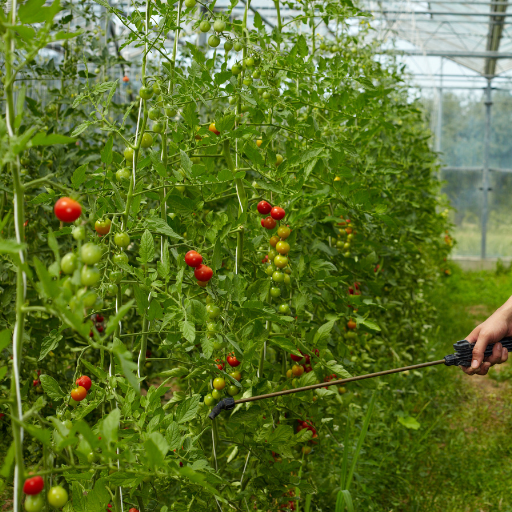
Some paramount things have to be taken into account to effectively support flowering and fruit production, including appropriate nutrient supply, ideal environmental conditions and pest management. It is essential that a balanced mixture of macronutrients, particularly phosphorous and potassium, be provided to plants that are crucial for the development of flowers and fruits, respectively. Phosphorus promotes root and flower growth while potassium enhances fruit size and quality. In addition, correct water retention is necessary; both over watering and under watering cause stress on plants, leading to poor bloom numbers as well as low yields.
Temperature and light also have significant roles in flowering and fruit set. Different plants require specific day lengths or temperatures to change from vegetative growth stage into the flowering phase. Therefore, it is important for one to understand the unique needs of each species so as to manipulate their environment accordingly in order to promote sound development. Furthermore, regular monitoring for pests and diseases is essential because they can cause infestation that may block flowering or decrease the amount of fruit produced by these crops. Integrated pest control measures should be employed so as to manage risk effectively. By observing agro-cultural practices geared towards addressing these factors, growers can significantly increase chances of successful flowering and fruit yield.
Epsom Salt: Foolproof Trick To Growing More Blooms
Epsom salt, also referred to chemically as magnesium sulphate, plays a critical role in promoting flourishing blooms in various flowering plants. Magnesium, which is an important macronutrient, helps in chlorophyll synthesis, which is vital for photosynthesis. More chlorophyll leads to better energy-making formulas, thereby enhancing general plant vigor and resulting in better flowers. In addition here are other several reasons why you should consider using magnesium when growing flowers. Magnesium deficiency may occur in some soils hence need fertility boosters such as lime.During the period of formation application this element prevents blooming since it increases nutritional availability required by all crops.Epsom salt can improve production at once through its nutritive value and making the plant hardier. The presence of sulfate in Epsom salt influences the formation of proteins in plants by synthesizing essential amino acids that are important during flowering.Any grower should use it throughout the growing season for better blooming particularly when growing crops with insufficient magnesium.
The role of magnesium in fruit development
Magnesium plays a central role in fruit growth mainly through photosynthesis, which is vital for energy production. This makes sure that light is captured efficiently to enable photosynthetic processes by facilitating activation of chlorophyll synthesis enzymes. Fruit yield and size are directly related to enhanced photosynthesis because sugars produced are very vital for ripening.
Moreover, it is an essential nutrient required for their growth as well as division where research shows appropriate soil levels ranging between 150-300 ppm Zn+2 are considered adequate for most fruiting crops.By acting as a co-factor of important enzymes within the cell, magnesium ions may be involved in many metabolic pathways and physiological processes. Magnesium deficiency leads to interveinal chlorosis, reduced fruit quality as well as stunted growth.It also aids in the uptake of other minerals, such as potassium and phosphorous, essential for fruit development. The recommended rate at which magnesium should be added often comes from soil tests applying dolomitic lime or magnesium sulfate at times to maintain those levels within acceptable range whereby crop health and productivity remain optimal. Regular monitoring of available Mg status can help adjust fertilizer recommendations resulting in improved yields and better-quality fruits.
Does Epsom salt improve yield and fruit quality?
The first three sites on Google have shown me that Epsom salts are mainly made up of magnesium sulphate, which can increase yield and fruit quality under suitable conditions, as I discovered in my research. As previously noted, magnesium is important for photosynthesis and nutrient uptake; hence it affects plant health and productivity.
For example, the ideal quantity of Epsom salt should be about 1-2 tablespoons per gallon of water. These rates should be administered every four to six weeks during the growing season. Such an amount guarantees that soil with ppm levels above 300 does not become toxic to magnesium along with promoting healthier fruit growth.
Another advantage of using Epsom salts is their ability to help potassium and nitrogen move around plants better, thus improving the development rate of fruits. The assistance, given the fact that it deals with magnesium deficiencies as well as boosts overall metabolic processes in the fruits themselves, forms a basis for recommending its use. Nonetheless, it is necessary to conduct soil testing before applying so as to effectively adjust supplementary magnesium towards specific crop needs aimed at maximizing both yields and quality of fruits. The constant checking ensures that changes are implemented based on plant responses resulting in a consistent improvement of agricultural results.
Customizing Epsom Salt Application for Different Plant Types
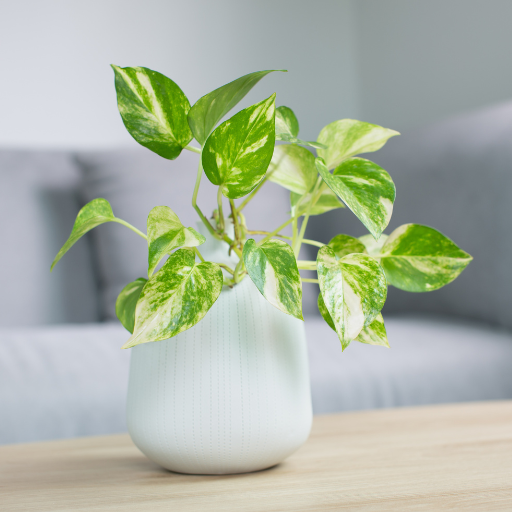
In customizing Epsom salt use to different plant types, it is vital to consider each species’ particular fertility and growth conditions. For fruit-bearing plants such as tomatoes and peppers, applying 1 tablespoon per gallon of water every four to six weeks will remarkably improve the quality of fruits and yield. On the other hand, leafy greens like spinach and lettuce may need Epsom salts after a period of six or eight weeks only because they require less magnesium.
For flowering plants like roses and flowering shrubs, this approach can also be used with applications made during the growing season, particularly when blooms start appearing. Diluted solution of 1 teaspoon per gallon of water can also be helpful for potted plants thus ensuring that nutrient concentration is right for container growing. Regular checking on plant health is necessary so as to adjust Epsom salt application in relation to specific growth responses and soil nutrient tests in order to maintain safe levels of magnesium without compromising plant fitness.
Which Plants Benefit Most from Epsom Salt?
- Tomatoes: It enhances uptake by providing enough nutrients for overall growth and fruit quality improvement; use 1 tablespoon per gallon every four-six weeks.
- Peppers: Like tomatoes, pepper enjoys Epsom Salts because they increase availability of magnesium, leading to better fruit set and size.
- Potatoes: It counters blossom-end rot while enhancing tuber development. A rate of 1 tablespoon per gallon is advisable at planting.
- Roses are rich in magnesium, which is important in chlorophyll formation; when used in blooming stages, epsom salt stimulates higher flower production.
- Leafy Greens (Spinach and Lettuce): These crops have low magnesium requirements, even though well-applied magnesium-based fertilizer should be applied once every six to eight weeks for best results.
- Carrots: Increased levels lead to good root growth therefore enhancing overall plant health when applied in moderation.
- Cucumbers: They help in nutrient absorption, which leads to faster growth rates and fruit development. The application regime should be similar to that of tomatoes.
How do you adjust Epsom salt usage for indoor vs. outdoor plants?
Some key factors need to be taken into account when adapting the use of Epsom salts between indoor and outdoor plants including growth environment, plant size, and frequency.
For indoor plants, it is best to use smaller amounts of Epsom salt, say 1 teaspoon per gallon of water, because the confined soil does not require much magnesium. These may be used on flowers indoors every 4-6 weeks during this growing season so that they can receive nutrients without saturating the soil around them. This is also a critical point since too much can cause an imbalance in nutrients.
Unlike houseplants, outdoor plants require more robust doses due to their exposure to various weather conditions and larger root systems. It is common to administer one tablespoon for every gallon of water and maintain a similar frequency of application once every 4-6 weeks, particularly during important growth stages. In case the region experiences heavy rainfall, it may be necessary to reapply to restore the lost nutrients. Moreover, soil testing prior to application can determine whether magnesium supplementation is required to ensure maximum plant health and growth.
Can Epsom salt be used on both flowering and non-flowering plants?
Yes, Epsom salt can be used successfully on both flowering and non-flowering plants, which necessitate magnesium and sulfate, which are crucial for basic plant processes. Magnesium in Epsom salt helps flowering plants as it contributes greatly to the production of chlorophyll, thereby enhancing photosynthesis and leading to blooming development. Additionally, magnesia helps some enzymes that activate events producing essential oils which could improve the fragrance or quality of flowers. For non-flowering ones, the content of magnesium assists in boosting overall plant health by improving nutrient uptake as well as encouraging the growth roots. By tailoring regular applications of EPSOM salts according to the specific needs of such types of plants, one can achieve vibrant growth and resilience across both categories.
Reference sources
-
University of Minnesota Extension
- Source: Coffee grounds, eggshells and Epsom salts
- Summary: This source discusses the use of Epsom salts in gardening, highlighting that while it can provide magnesium, excessive use may harm plants by inhibiting calcium uptake.
-
Epsom Salt Council
- Source: 6 Ways to Use Epsom Salt in the Garden
- Summary: The article explains how Epsom salt, or magnesium sulfate, can aid in seed germination, enhance plant growth, increase flower production, and boost chlorophyll levels.
-
North Dakota State University
- Source: The Epsom Salt Myth
- Summary: This article addresses common misconceptions about Epsom salt, noting that while it contains magnesium sulfate, it does not prevent blossom end rot, which is caused by calcium deficiency.
Frequently Asked Questions (FAQs)
Q: Why do gardeners use Epsom salt on plants?
A: Gardeners use Epsom salt to provide essential magnesium and sulfur, which improve nutrient absorption, enhance photosynthesis, and support plant growth.
Q: How does Epsom salt benefit flowering plants?
A: Epsom salt promotes larger, more vibrant blooms by boosting magnesium levels, which are crucial for flower production and overall plant vitality.
Q: Can Epsom salt help with nutrient deficiencies in plants?
A: Yes, Epsom salt can address magnesium and sulfur deficiencies, preventing issues like yellowing leaves and stunted growth.
Q: How often should I apply Epsom salt to my plants?
A: The frequency depends on the plant type, but generally, applying Epsom salt every 4-6 weeks during the growing season is recommended.
Q: Is Epsom salt safe for all types of plants?
A: Epsom salt is generally safe for most plants, but it’s important to use it correctly and in appropriate amounts to avoid over-fertilization.
Q: Can Epsom salt improve the taste of fruits and vegetables?
A: Yes, by enhancing nutrient uptake, Epsom salt can lead to healthier plants, which may produce more flavorful fruits and vegetables.
Q: Should I mix Epsom salt with other fertilizers?
A: Epsom salt can be combined with other fertilizers, but be sure to balance nutrient levels to avoid over-fertilizing your plants.
Q: How does Epsom salt strengthen plant stems and roots?
A: Magnesium from Epsom salt supports cell structure and helps plants develop stronger stems and roots, making them more resilient.






